What is a customer profile?
A customer profile is all the relevant information and data that you’ve captured for a customer, including the key interactions they have had with your brand. This includes both operational data and experiential data, such as:
- Demographic data with basic details such as age, location, job role, income etc.
- Psychographic data such as values, interests, attitudes, and personality traits
- Purchasing preferences and intent (goals, motivations)
- Pain points
- Buying behaviour and purchasing patterns
- Brand contact frequency
- Customer lifetime value
- Which communication channels they prefer to use
Start creating your top-performing profiles with Qualtrics
Customer profiles are used to identify the customers you have and provide an in-depth understanding of who they are, what they want, and how they behave. It helps you to identify and analyse key customer segments based on shared characteristics, enabling more targeted customer experiences.
Rich customer profiles not only help you better target your existing customers, but also gives you insights in how to better engage with potential customers. understand common pain points and the motivations behind purchases or sign-ups. Creating a customer profile is the basis of a lot of business outreach, whether that’s for marketing strategies or for product development.
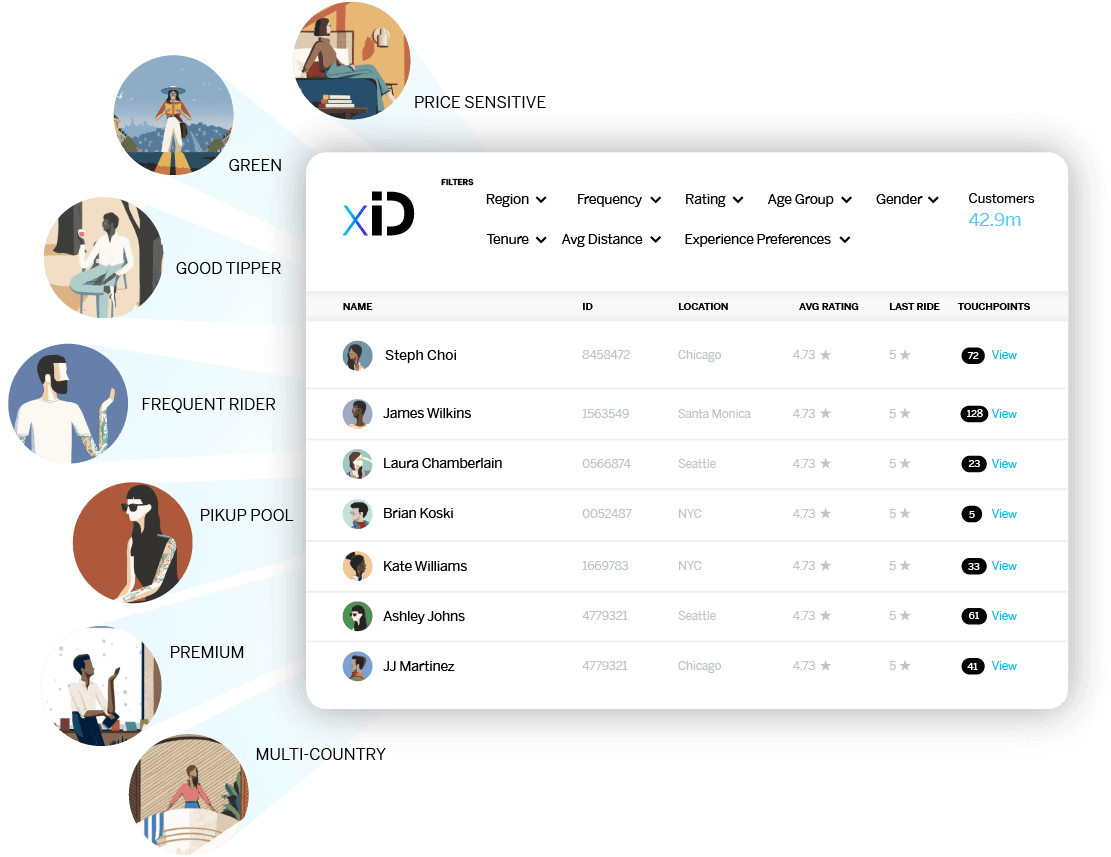
B2B and B2C customer profiles
There are differences between a B2B customer profile and a B2C customer profile, mostly in terms of the information you include. Usually, with a B2B customer profile, you’re trying to understand a business that you’re targeting, rather than an individual.
In B2B account-based marketing, you might use an Ideal Customer Profile (ICP), which actually refers to a company you think would make the best customer for your business. In this type of customer profile, you might also include firmographic information, which could be company size, annual turnover, employee count, and more.
However, sometimes you might create a personal customer profile for someone within that business who you’re aiming to sell to, such as a finance manager. This would follow the more usual customer profile template. Of course, you might be targeting various people within the same company too, but who work in different departments.
The difference between a customer profile and a buyer persona
Though both customer profiles and buyer personas include similar information, a buyer persona is a fictional version of your customer. It’s based on the same data as your customer profile, but it’s a creative imagining of the ideal customer you’d like to target.
Using a buyer persona can be valuable, particularly when creating sales and marketing campaigns designed to reach a target audience. However, a customer profile only includes true data about your customer (i.e. Customer X is a systems analyst making $8k/month in Chicago), whereas a buyer persona also includes fictional details (i.e. Brad is a systems analyst who’d like to start a family with his wife in Chicago, but wonders how to spend his $8k/month salary wisely on baby products).
Why is building customer profiles essential for business?
Customers are seeking experiences that feel tailored to them, with their needs met and expectations exceeded. By creating customer profiles, you can provide a personalised experience that will encourage them to come back for more.
Customers expect a personal approach
In a world full of targeted advertising, customers expect a personalised approach from brands. Accenture discovered that 48% of consumers expected a brand to treat them as special if they were a good customer. Not offering a personal approach is costly; the same study found 33% of those that had ended a brand relationship had done so because they didn’t feel their experience was personalised to them.
Buyers are happy to share their feedback and experiences for personalisation
Customers are often willing to provide information, such as as feedback, preferences and interests, if it means getting a personalised experience, demonstrating just how popular a personalised approach can be. Salesforce found that 79% of customers are content to share data for personalisation, with 88% keen to do so if the result is personalised offers.
Personalisation leads to better business outcomes
When you personalise your approach to customers with a deeper understanding of who they are, what they want and how they’re likely to behave, you encourage customer loyalty and satisfaction. Higher satisfaction leads to lower customer churn, meaning better business outcomes for your brand. We found 42% of consumers cut their spending after having a bad experience with brand, leaving 9.5% of your revenue at risk of being lost. By creating unique customer profiles, and understanding the journey they’ve taken with you, the issues they’ve encountered and their expectations, you can take decisions that you know will positively impact their likelihood to stay a customer. That might be in your marketing, or during customer service. Customer profiles are a key part of getting customer experience right.
How to create a customer profile
There are basic ways to create customer profiles. However, for the most valuable insights and effective customer profiling, you need to go deeper into your data, beyond just demographic information.
Collect thorough feedback
Your customer feedback is the most vital data to collect when customer profiling. Who better to tell you about themselves than your existing customers?
Blending direct and indirect feedback will help you add context details to specific customer profiles’ basic demographic information. As such, you’ll need to send feedback surveys, post-interaction surveys and leverage conversational analytics to capture the full journey and how that made them think and feel. You can also perform market research, such as in-person interviews and focus groups, for insights gained from your customers themselves.
Customer profiles are a picture of their time with you. Sometimes they will tell you how they feel, what they want and sometimes they will do so indirectly with how they behave (what they do, and don’t do). Having a platform that can collate that information to give you the full picture is essential.
Create rich profiles based on customer experience
Rather than using basic demographic data, it’s best to assess customer data for key insights on customer experience. It’s not only what your current customers are telling you that’s important for to include in a customer profile – it’s what they’re not telling you that helps you build a complete picture. Pull actionable insights from unstructured data, such as social media posts, reviews, customer support conversations and more, with tools such as natural language understanding (NLU).
For example, customers might tell you they’re unhappy with a product with a simple review score (three out of five stars, for example), but in an open text chat with your customer service team, they might indicate that there was significant customer effort to use it, and they are frustrated with a particular pain point. You might note they have had repeat contact on the same issue when cross-referencing with your operational data.
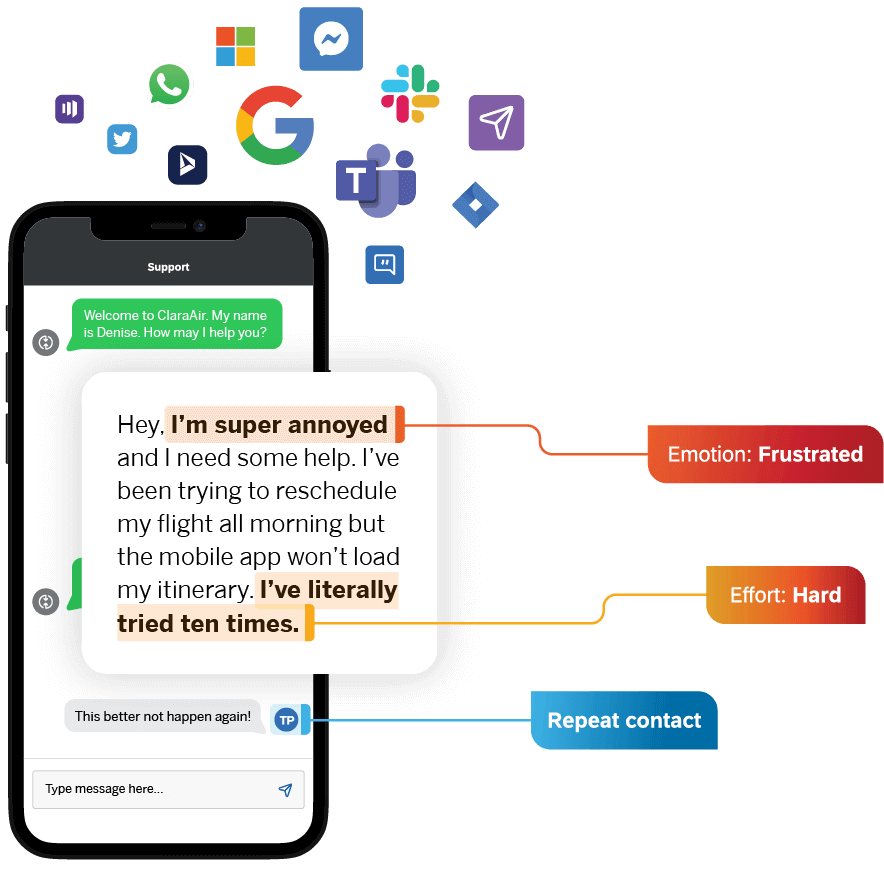
Having customer profiles that includes all of the information above means that when customer service engages with them or when you initiate sales and marketing campaigns, you’re able to address the customer’s needs more effectively. Rather than sending them an update on the same product they’ve taken issue with, for example, you might upsell a better product or service that will result in fewer negative interactions and contact.
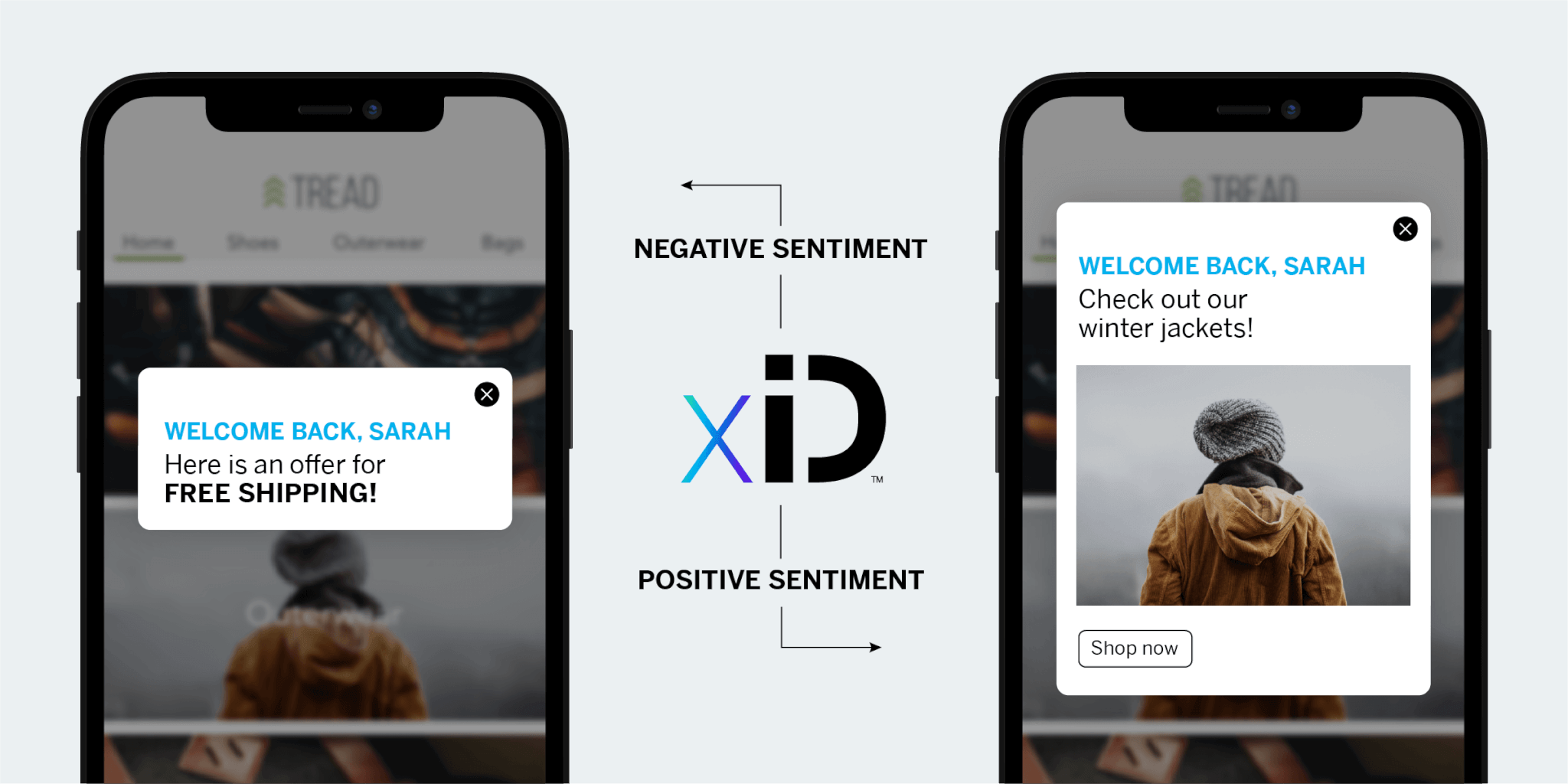
Equipped with direct feedback from tools such as post transaction surveys and indirect signals such as chat commentary, online reviews or social posts, you’re able to create rich, dynamic profiles that help you segment and target more effectively.
Use technology for creating a customer profile
Putting together a customer profile that unifies all your customer data, adds context through operational data and provides you with the necessary analytics is hard without the right tools.
Customer data platforms (CDPs) can be a useful tool in your arsenal to store operational data related to customers, but miss all the experiential data that provides a complete understanding of the customer.
For example, Qualtrics Experience iD is more than a repository for customer data – it’s a single, unified system for all experience data, from customer feedback to signals in unstructured data. This allows you to build and act upon a rich customer profile, helping you to win over your ideal customer with experiences that delight.
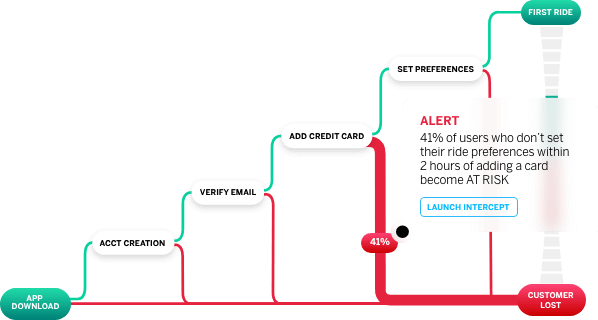
Customer profile examples
To help you build out an in-depth customer profile, here is a customer profile example that gives you a good foundation to work with.
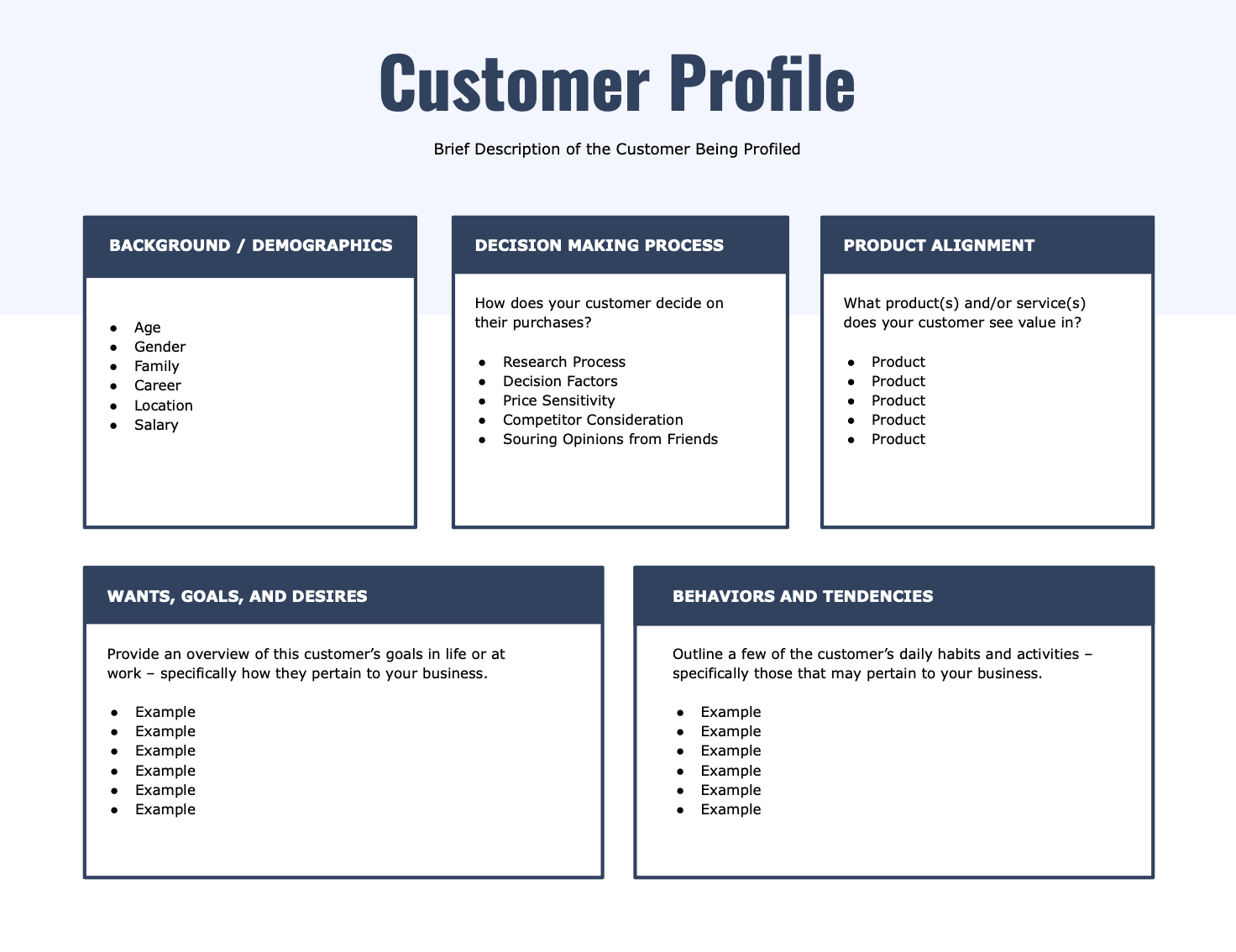
Here’s an example of a customer profile created on Qualtrics Experience iD:
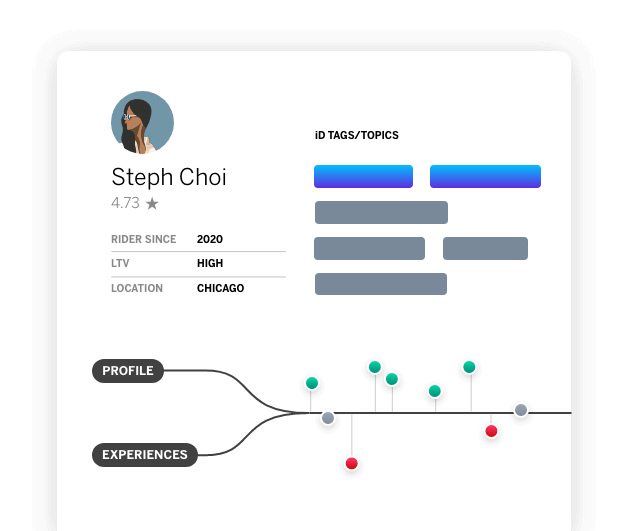
With a dynamic customer profile, you can go into more depth for each experience.
When to use customer profiles
Whether you’ve used a simple customer profile template or done a deep-dive into your data to help you create a customer profile, knowing when to use them is important.
In an ideal world, every interaction you have with your customers should be informed by your customer profile. Every interaction with your customer service teams, every transaction, all your sales and marketing campaigns – every step of your customer journey can likely be improved with valuable insights gleaned from a customer profile.
Equipped with these important data points and insights, you can add more value to every point of contact with your customer base. Each customer profile is a blueprint for how a customer thinks, and how they’d like to be treated. Armed with this information, your customer profile becomes a great reference for predicting future behaviour.
Create the ultimate customer profiles with Qualtrics
Qualtrics Experience iD allows you to pull all relevant customer and operational information into one centralised location within a connected, intelligent system. Your customer profile data, as well as experience data, is collated with every single signal from every channel to give you a customer profile like no other.
Best of all, you can apply powerful analytics to apply your customer profile knowledge to every interaction, offering the best customer experience possible to your customer base, current and future.
An important concept that might be good to weave in somewhere is that targeted customer experiences can be at the individual customer level, or targeting an entire segment of customers.
Start creating your top-performing profiles with Qualtrics